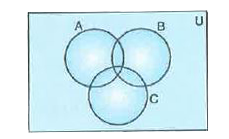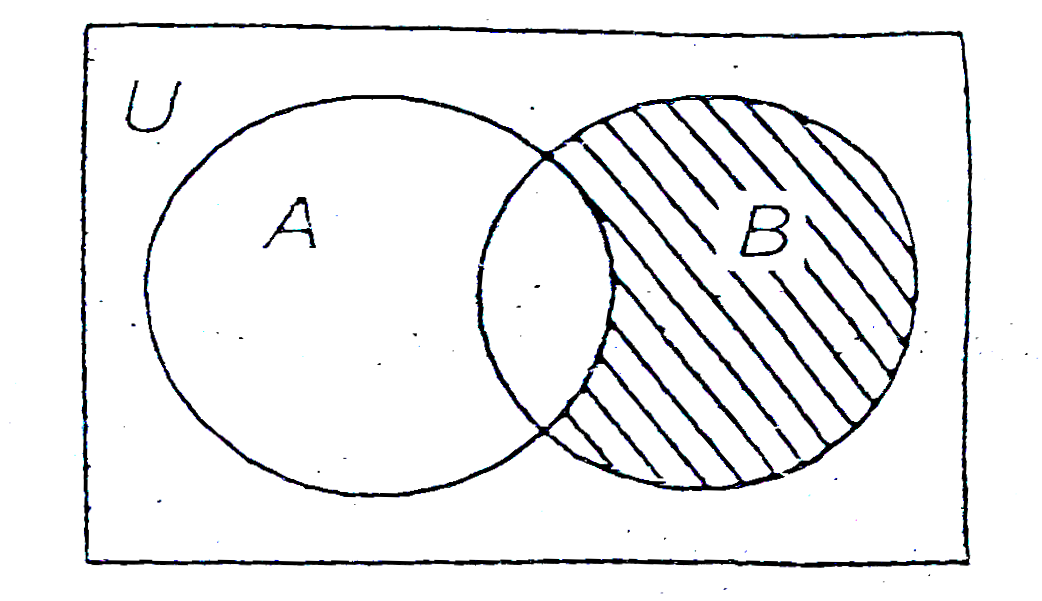Shade the following :
(i) Ac∩(B∪C)
(ii) Ac∩(C−B) in given Venn diagram .

Step by step video & image solution for Shade the following : (i) A^(c)cap(BuuC) (ii) A^(c)cap(C-B) in given Venn diagram . by Maths experts to help you in doubts & scoring excellent marks in Class 11 exams.
Updated on:21/07/2023Topper's Solved these Questions
- SETS BOOK - MODERN PUBLICATIONCHAPTER - SETS EXERCISE - EXERCISE 1 (a) (Short Answer Type Questions)
7 Videos
- SETS BOOK - MODERN PUBLICATIONCHAPTER - SETS EXERCISE - EXERCISE 1 (b) (Short Answer Type Questions)
7 Videos
- SETS BOOK - MODERN PUBLICATIONCHAPTER - SETS EXERCISE - CHAPTER TEST 1
12 Videos
- SEQUENCES AND SERIESBOOK - MODERN PUBLICATIONCHAPTER - SEQUENCES AND SERIESEXERCISE - CHAPTER TEST
12 Videos
- STATISTICSBOOK - MODERN PUBLICATIONCHAPTER - STATISTICSEXERCISE - Chapter Test
7 Videos
Similar Questions
Knowledge Check
Suppose A, B and C are three sets. Consider the following:
(i) A∪(B∩C)=(A∪B)∩(A∪C)
(ii) (A∩B)∪C=(A∪C)∩(B∪C)
Which of the above is true?A(i)onlyB(ii)onlyCBoth (i) and (ii)DNeither of (i) and (ii)
If A = {x : x is a natural number}
B = {x : x is an even natural number}
C = {x : x is an odd natural number"}
D = {x : x is a prime number}
then find each of the following :
(i) (A∩B)
(ii) (A∩C)
(iii) (A∩D)
(iv) (B∩C)
(v) (B∩D)
(vi) (C∩D).
View SolutionIf A={1,2,3,4},B={3,4,5},C={1,5,6}, then findof the following :
(i) A∪B
(ii) A∪(B∩C)
(ii) A−B
(iv) A−(B∪C).
View SolutionDraw the Venn diagram for each of the following :
(i) (A∩B)'
(ii) (A∪B)'
(iii) A'∪B'
(iv) A'∩B'.
View SolutionLet A={a,b,c,d,e,f}, B={c,d,e,g} and C ={b,c,f,g} be subsets of the set U={a,b,c,d,e,f,g,h}. Draw Venn diagrams to represent the following sets: (i) A∩B (ii)A∪(B∩C) (iiI) A−B (iv) B−A (v) A−(B∩C) (vi) (B−C)∪(C−B)
View SolutionThe shaded area in given Venn diagram represent

View SolutionLet A=(a,e,i,o,u},B={a,d,e,o,v}andC{e,o,t,m}.
Using Venn diagrams, verify the following :
(i) A∪(B∩C)=(A∪B)∩(A∪C)
(ii) A∩(B∪C)=(A∩B)∪(A∩C).
View SolutionIf A={1,2,3,4},B={2,4,6,8}andC={3,4,5,6}, then find each of the following ,
(i) (A−B)∩C
(ii) (A∩B)−C
(iii) A−(B−C)
(iv) A∪(B−C).
View Solution